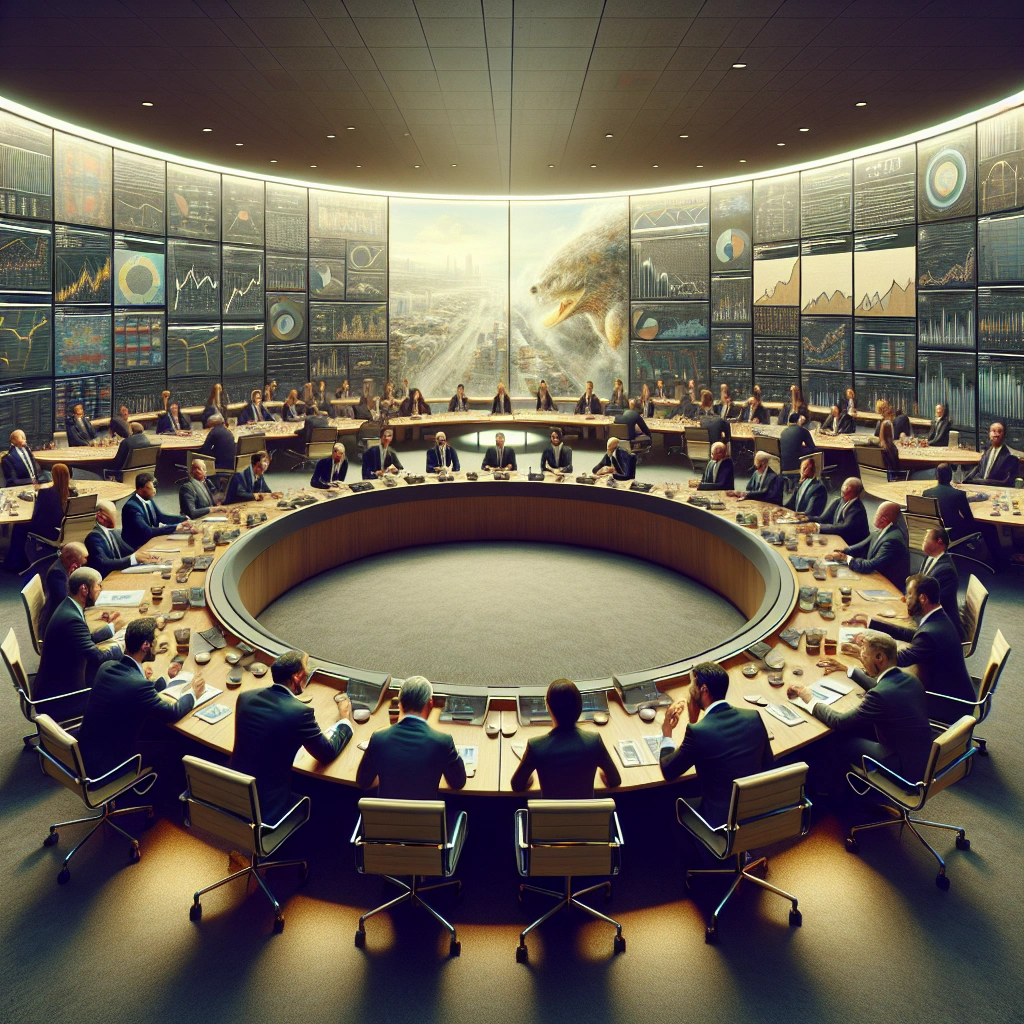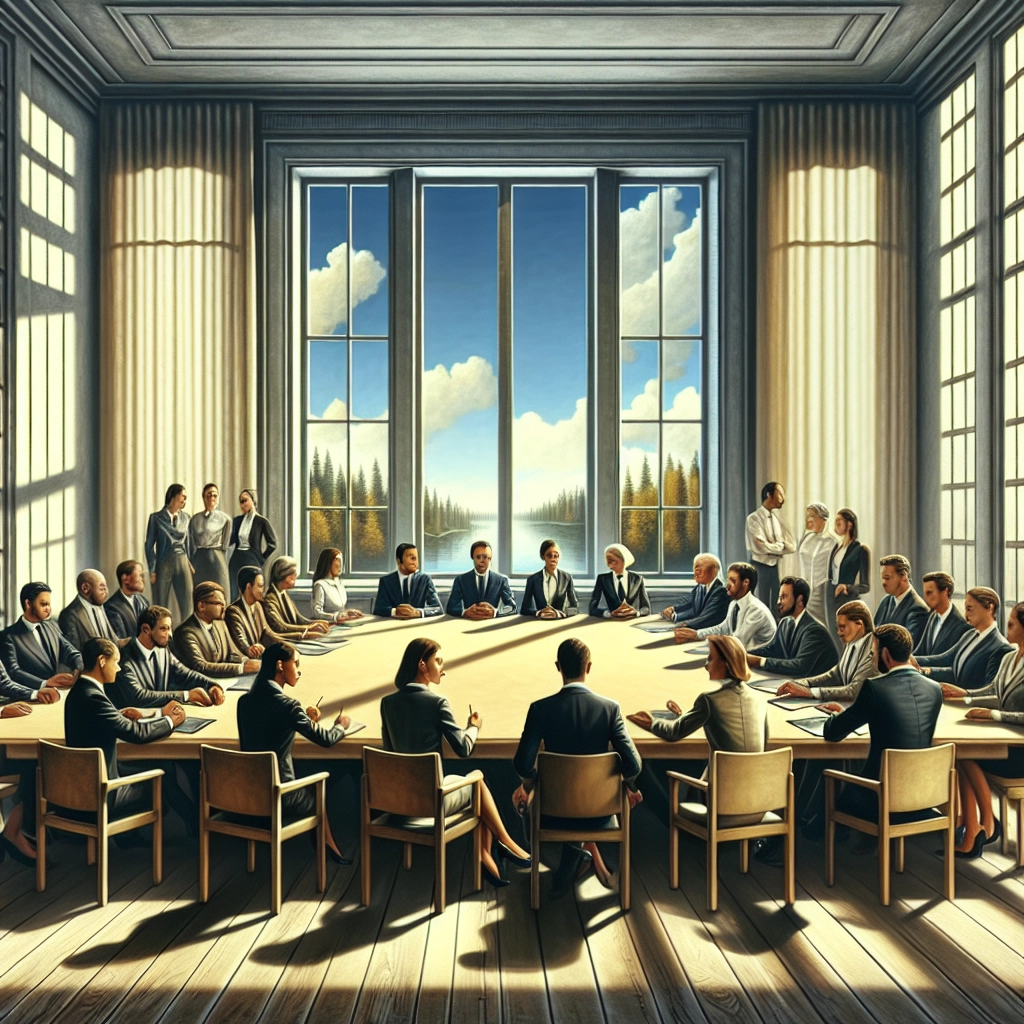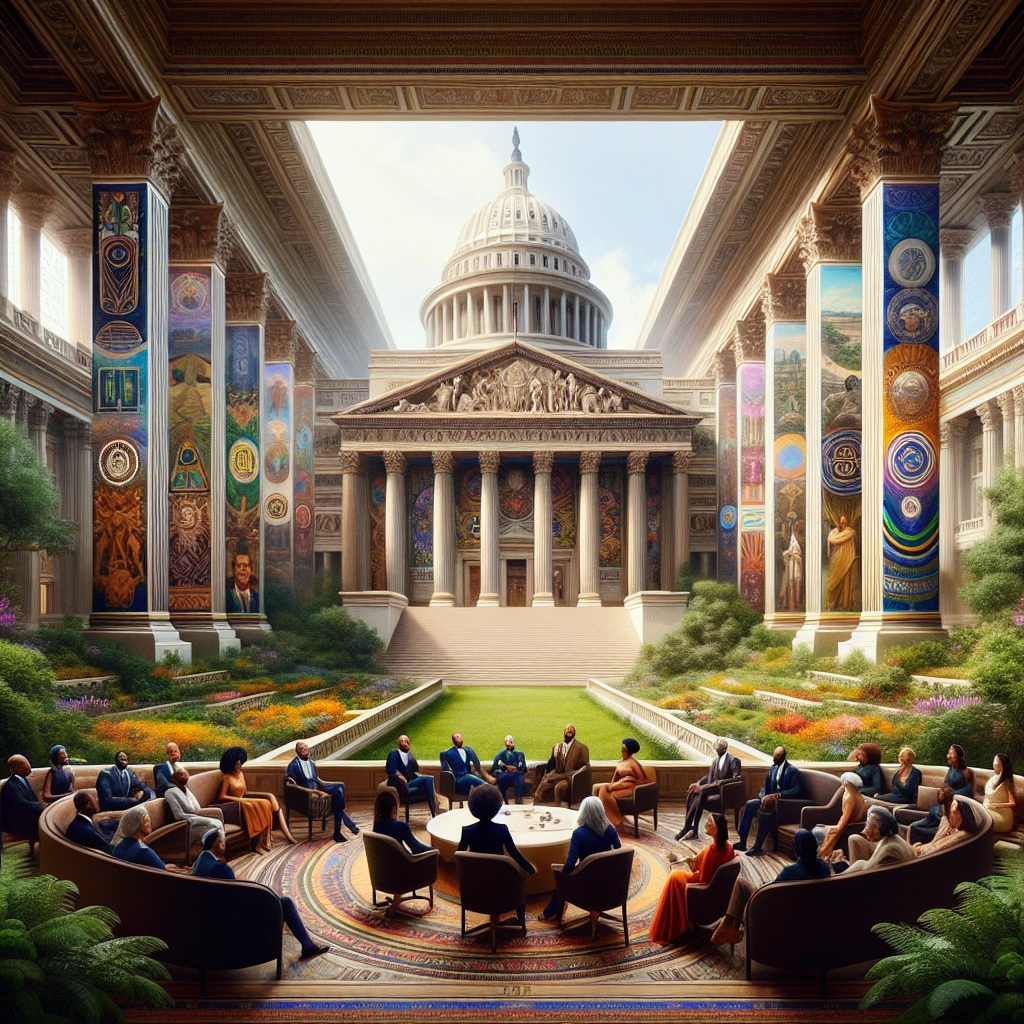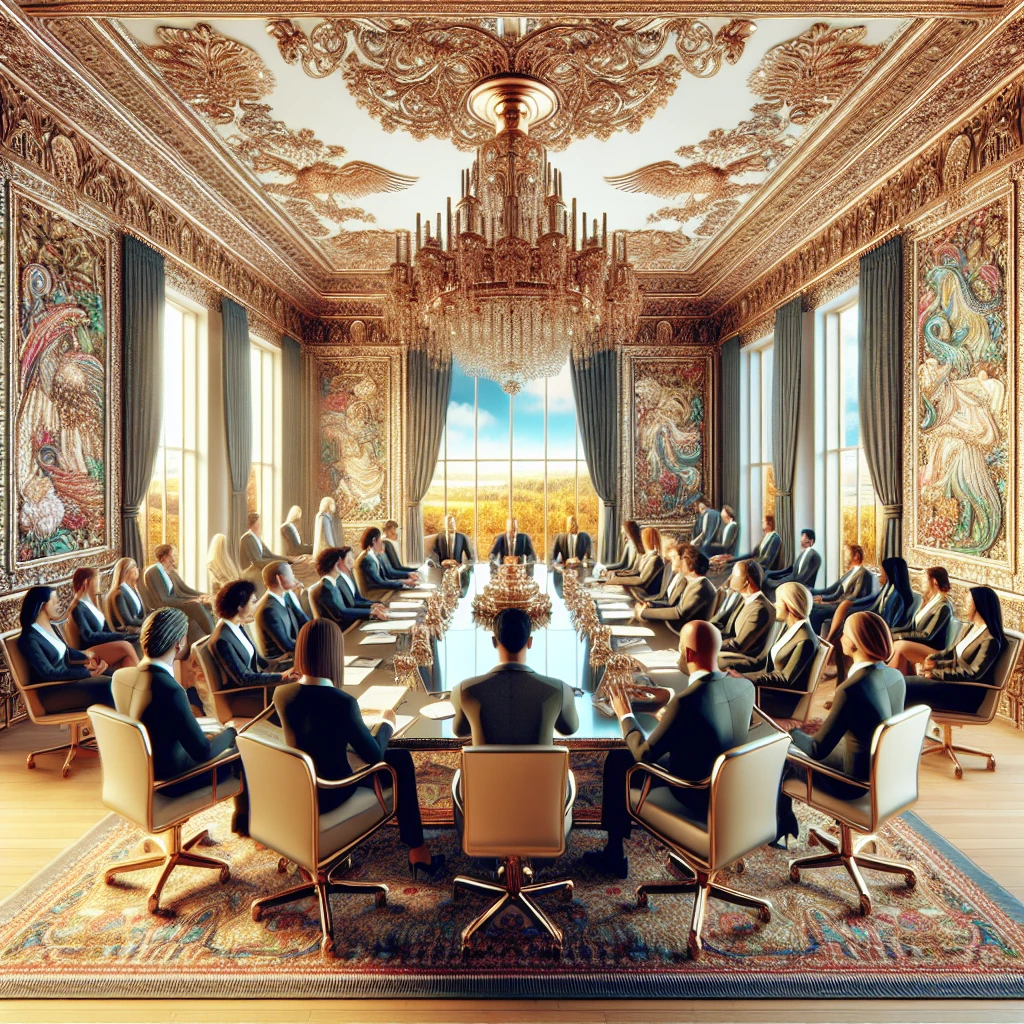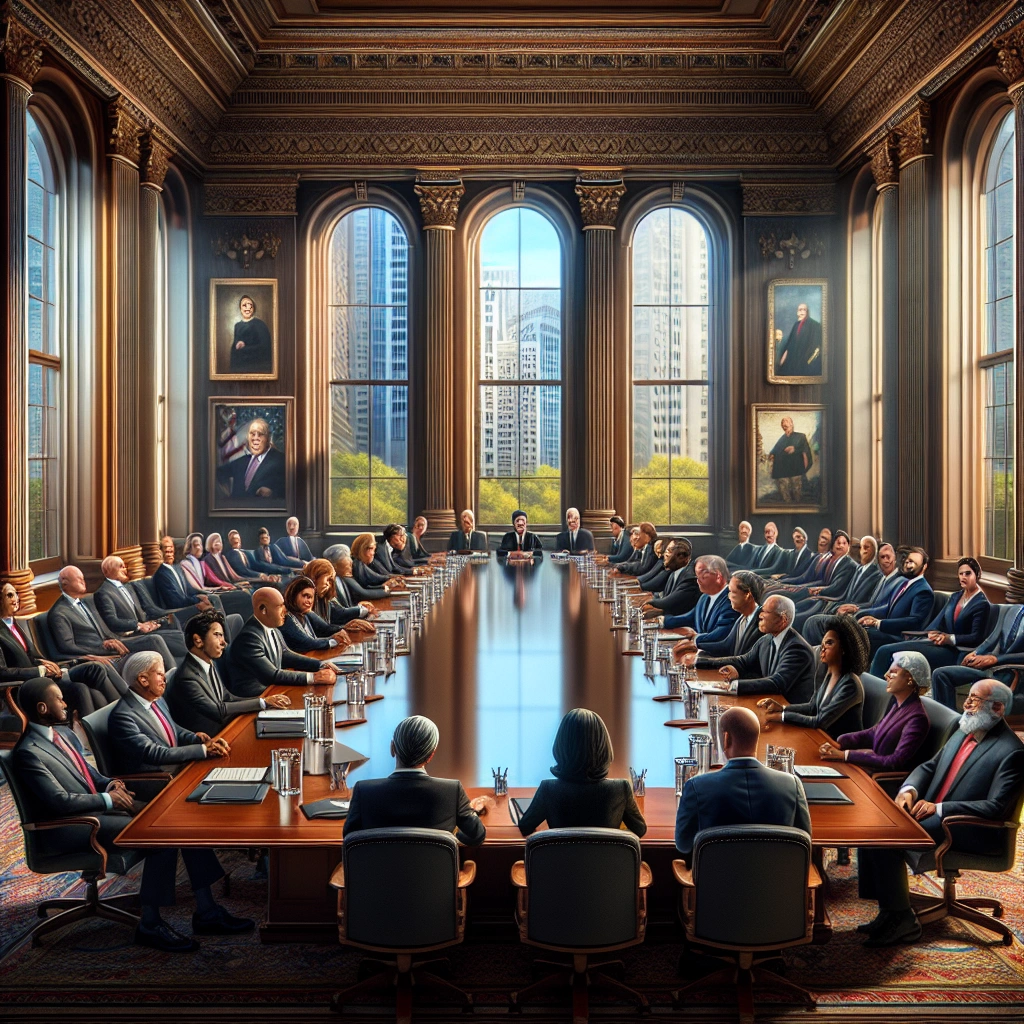Who Runs The Federal Reserve? – The Inside Scoop


“Who runs the federal reserve” is a common question many people have. The Federal Reserve system is run by a Board of Governors, which consists of seven members appointed by the President and confirmed by the Senate.
These members serve 14-year terms, with one member designated as the Chair and another as the Vice Chair. The Federal Reserve Board is responsible for overseeing the nation’s monetary policy, regulating and supervising banks, and maintaining the stability of the financial system.
The Chairman of the Federal Reserve is often the most visible and influential member, as they represent the central bank in various economic and financial matters.
Check out this Youtube video: “How The Federal Reserve Works (And Who Really Owns It)” to learn about who runs the Federal Reserve and gain a deeper understanding of its operations.
Understanding the Federal Reserve
History of the Federal Reserve
The Federal Reserve System, established in 1913, was a response to the severe panic and banking panics, aiming to stabilize the banking system. Over time, it has evolved considerably, gaining independence in monetary policy and reducing the role of the executive branch.
Purpose and Functions of the Federal Reserve
The five key functions of the Federal Reserve include promoting the health of the U. S. economy, ensuring the stability of the financial system, and serving the public interest. It provides the nation with a safer, more flexible, and more stable monetary and financial system.
| Key Functions | Description |
|---|---|
| Monetary Policy | The Fed evolves its policy goals under the influence of new economic thinking and pressure. |
| Central Bank of the United States | Provides the U. S. with a safer, more flexible, and more stable monetary and financial system. |
| Custodian of Reserve Accounts | Oversees the supply of currency and acts as a fiscal agent for the U. S. government. |
| Promoter of Financial Stability | Aims to enhance the stability of the American banking system and reduce the impact of economic slumps. |
| Supporting a Healthy Economy | Engages at home and abroad to ensure the financial system supports a healthy economy for U. S. entities. |
The Structure of the Federal Reserve
Board of Governors
The Board of Governors of the Federal Reserve System is the main governing body overseeing the Federal Reserve. It consists of seven members, or “governors,” who are appointed by the President of the United States and confirmed by the U. S.
Senate. Its primary role is to guide the operation of the Federal Reserve System and set monetary policy to promote maximum employment and stable prices in the U. S. economy.
Federal Reserve Banks
The Federal Reserve Banks, also known as the Reserve Banks, are the operating arms of the central bank. They operate within their respective geographic regions and provide services to depository institutions and the public.
Each of the 12 Reserve Banks serves its region of the country, supporting a healthy economy for U. S. households, communities, and businesses.
Federal Open Market Committee
The Federal Open Market Committee (FOMC) is an essential body within the Federal Reserve that determines the direction of monetary policy. It is composed of the seven members of the Board of Governors and also includes a group of Reserve Bank presidents.
The FOMC holds meetings to review economic and financial conditions, assess risks to long-run goals, and direct open market operations to execute U. S. monetary policy.
The Chair of the Federal Reserve
The Chair of the Federal Reserve is responsible for providing leadership and executing the mandate of the central bank. This includes pushing for maximum employment, stable prices, and maintaining long-term interest rates in the moderate range.
Responsibilities of the Chair
The main responsibility of the Chair is to carry out the mandate of the Fed, promoting the goals of maximum employment, stable prices, and moderate long-term interest rates. This involves leading the Federal Reserve in achieving its objectives while maintaining stability in the financial system.
Selection Process for the Chair
The Chair serves a four-year term after being nominated by the President of the United States and confirmed by the United States Senate. They serve concurrently as a member of the Board of Governors.
The process for selecting a Federal Reserve Bank president is set forth in the Federal Reserve Act, involving the approval of the Federal Reserve Board of Governors.
| Selection Process for the Chair | Details |
|---|---|
| Nomination by the President | Nominated by the President of the United States |
| Confirmation by the Senate | Confirmed by the United States Senate |
| Term Length | Serves a four-year term concurrently with the Board of Governors |
The Federal Reserve Board of Governors
The Federal Reserve Board of Governors is entrusted with the responsibility of guiding the operation of the Federal Reserve System to promote its goals and fulfill its responsibilities as defined by the Federal Reserve Act. The board plays a crucial role in shaping the monetary and financial policies that impact the entire nation.
Role of the Board of Governors
The role of the Board of Governors is to guide the operation of the Federal Reserve System, promoting its goals and fulfilling the responsibilities outlined in the Federal Reserve Act. Essentially, the board sets the direction for the entire Federal Reserve System and plays a pivotal role in economic stability and growth.
Current Members of the Board
The current members of the Board of Governors are nominated by the President of the United States and confirmed by the U. S. Senate.
These members work collectively to oversee the vital functions of the Federal Reserve, including setting monetary policy and ensuring the stability of the financial system.
Who Runs the Federal Reserve Banks?
The Federal Reserve Banks are governed by the Board of Governors of the Federal Reserve System, consisting of seven members who are nominated by the President and confirmed by the Senate. Presidents of the Reserve Banks
The current presidents of the Federal Reserve Bank are appointed by their respective boards of directors, subject to the approval of the Federal Reserve Board of Governors.
Decision-making process at the Reserve Banks
Process
Description
Appointment
Class B and C directors of the Reserve Bank select the president, subject to the approval of the Federal Reserve Board of Governors.
Reappointment
The Federal Reserve Board approves the reappointment of the Reserve Bank presidents for new five-year terms.
The Federal Open Market Committee
The Federal Open Market Committee (FOMC) is composed of twelve members, including the seven members of the Board of Governors of the Federal Reserve System, the president of the Federal Reserve Bank of New York, and four of the remaining eleven Reserve Bank presidents, who serve one-year terms on a rotating basis.
Composition of the FOMC
The FOMC is composed of the seven members of the Board of Governors of the Federal Reserve System, including the Chair, Jerome H. Powell, the Vice Chair, John C. Williams from the New York branch, and other members holding positions from various Reserve Banks.
Decision-making process at the FOMC
The decision-making at the FOMC involves setting monetary policy and adjusting the target range for the federal funds rate, which impacts other interest rates. The Committee uses a consensus-based approach for making decisions on monetary policy, taking into consideration economic indicators and expert analysis to guide its policy choices.
| Position | Name |
|---|---|
| Board of Governors, Chair | Jerome H. Powell |
| New York, Vice Chair | John C. Williams |
| Board of Governors | Michael S. Barr |
| Other Reserve Bank Presidents | Rotating Basis |
Influence on Monetary Policy
The Federal Reserve plays a crucial role in influencing the economy through its monetary policy decisions.
It utilizes various tools to control the money supply, interest rates, and credit availability in the economy, impacting borrowing, investment, and spending.
Tools used by the Federal Reserve
The Federal Reserve employs several tools to implement monetary policy. These tools include open market operations, reserve requirements, and the discount rate.
Impact of Federal Reserve decisions on the economy
The decisions of the Federal Reserve have a significant impact on the economy. Through its policies, the Federal Reserve can influence employment, inflation, and interest rates, thereby shaping the overall economic landscape.
| Tool | Role |
|---|---|
| Open Market Operations | Influence money supply and interest rates through buying and selling of government securities. |
| Reserve Requirements | Regulate the amount of funds that banks must hold in reserve, thereby affecting lending and money supply. |
| Discount Rate | Sets the interest rate for banks to borrow funds from the Federal Reserve, influencing overall interest rates. |
The Federal Reserve’s tools and decisions directly impact the economy by controlling the availability of money and credit, interest rates, and ultimately influencing economic growth and stability.
Criticisms and Controversies
The challenges faced by the Federal Reserve are multi-faceted, as critics argue that its monetary policies often lead to economic booms and busts. This criticism stems from the perception that the Fed’s creation of either excessive or insufficient fiat money contributes to economic instability.
In addition, there are claims that the Fed should not have the power to set interest rates, suggesting that market forces should dictate these decisions.
The public perception of the Federal Reserve is not without controversy. Critics often highlight that the Constitution does not explicitly grant the Fed the authority it currently holds.
This has led to widespread skepticism regarding the Fed’s ability to achieve its intended goals of greater stability and low inflation. Consequently, there have been ongoing debates about potential changes to the Fed’s policies and organizational structure to address these concerns.
| Criticisms | Controversies |
|---|---|
| Monetary policies causing economic instability | Debate around the Fed’s constitutional authority |
| Market forces vs. Fed’s interest rate setting power | Challenges in achieving stability and low inflation |
Transparency at the Federal Reserve
Access to information
The Federal Reserve is committed to transparency, providing the public with access to a wide range of information. This includes key economic indicators, monetary policy decisions, and reports on the state of the economy.
By offering access to such vital data, the Reserve aims to enhance public understanding and promote informed participation in economic discussions.
Efforts to increase transparency
In efforts to increase transparency, the Federal Reserve has taken various steps. This includes providing detailed descriptions of the state of the economy and the reasoning behind policy decisions.
Furthermore, the Reserve has prioritized the improvement of policy explanations and report publications to ensure clarity for the public. These initiatives aim to foster greater understanding and confidence in the Federal Reserve’s operations.
| Transparency Measures | Description |
|---|---|
| Release of Economic Indicators | The Federal Reserve releases crucial economic indicators to keep the public informed. |
| Detailed Policy Descriptions | Detailed explanations of policy decisions and the state of the economy are provided. |
| Enhanced Publication Clarity | Policy reports and findings are published with a focus on clear explanations for the public. |
The Role of Congress
Congress plays a crucial role in overseeing the Federal Reserve System and its entities. They have the authority to provide guidance and influence the operations of the Federal Reserve through various mechanisms.
Oversight of the Federal Reserve
Congress exercises oversight over the Federal Reserve System by summoning Board governors and staff to testify before Congress frequently. This process allows Congress to discuss critical issues within the purview of the Federal Reserve and ensures transparency in their operations.
Congressional Influence on the Federal Reserve
The influence of Congress on the Federal Reserve is evident through its ability to set monetary policy goals for the Federal Reserve. While providing independence to the central bank to achieve these goals, Congress retains the authority to influence and control the Federal Reserve’s operations as per the Federal Reserve Act of 1913.
| Aspect | Description |
|---|---|
| Congressional Oversight | Congress exercises oversight by summoning Board governors and staff to testify frequently. |
| Congressional Influence | Congress sets monetary policy goals for the Federal Reserve and retains control as per the 1913 Act. |
International Impact
Influence of the Federal Reserve on global economy
The Federal Reserve’s decisions have a significant impact on the global economy. By influencing interest rates and the availability of credit, the Federal Reserve affects the accessibility and cost of borrowing for countries, which, in turn, impacts their economic growth and stability.
This influence extends to global financial markets, stock prices, wealth, and exchange rates, demonstrating the broad reach of the Federal Reserve’s policies.
Collaborations with other central banks
The Federal Reserve regularly collaborates with other central banks to ensure the smooth operation and stability of the global financial system. Through bilateral relationships and collective engagement, the Federal Reserve exchanges information, discusses policy strategies, and addresses potential challenges with central banks across the globe.
This collaboration fosters dialogue, facilitates information sharing, and promotes coordination to address broader trends affecting the global financial landscape.
The Federal Reserve’s Response to Crises
The Federal Reserve has a history of responding aggressively to financial crises, employing various monetary policy tools such as open market asset purchases, reserve regulation, discount lending, and forward guidance to manage market expectations. During recessions, the Fed aims to suppress unemployment rates and reinflate prices through these tools.
Actions taken during economic downturns
The Federal Reserve responded aggressively to the financial crisis that emerged in 2007, implementing programs to support the liquidity of financial institutions and improve conditions in financial markets. This involved flooding the banking sector with liquidity, lending to financial institutions other than banks, and swiftly cutting the funds rate to zero.
Evaluation of the Federal Reserve’s crisis management
Positive Aspects
Negative Aspects
The Fed’s swift response prevented financial market disruptions from intensifying the economic damage.
Challenges in producing sustainably reaching two percent inflation and the impact of historically low unemployment rates on inflation remain to be addressed effectively.
Public Perception of the Federal Reserve
Polls and surveys on public opinion
- According to a Pew Research Center analysis, Americans generally view federal agencies favorably, but there is limited understanding about the Federal Reserve’s role.
- A Forbes report suggests that only a small percentage of individuals claim to have significant knowledge about the responsibilities of the Federal Reserve.
Misconceptions about the Federal Reserve
- There are several myths and misconceptions about the Federal Reserve, such as the belief that the Fed directly controls the money supply and that it is funded through taxpayer money.
- Another common misconception is that the Fed prints money, when in actuality, it is the U. S. Department of the Treasury that prints notes under the instruction of the Board of Governors of the Federal Reserve System.
| Myth | Reality |
|---|---|
| The Fed prints money | The U. S. Department of the Treasury prints notes at the instruction of the Board of Governors |
| The Fed makes a profit | The Federal Reserve is subject to substantial oversight and not funded through taxpayer money |
| The Fed isn’t audited | The Federal Reserve is an audited organization held accountable by various oversight bodies |
| The Fed is not audited | All 12 Federal Reserve Banks are audited organizations under substantial oversight |
Future of the Federal Reserve
Potential changes in leadership
President Biden has appointed new governors to the Federal Reserve Board, bringing in fresh perspectives and expertise. This diversity in leadership is expected to bring about new policy directions and decisions.
Projected developments in the Federal Reserve’s policies
After 2023, the Federal Reserve is anticipated to lower the target range for the federal funds rate as inflation moves toward its long-run goal of 2 percent. Additionally, the interest rate on 10-year Treasury notes is projected to remain around 4 percent over the next five years.
Recommended Amazon Products for Who Runs the Federal Reserve
Here’s a curated list of products that can help you learn more about the Federal Reserve and its operations. These recommendations are based on relevance to the topic, quality of information, and customer reviews.
“The Federal Reserve and the Financial Crisis” by Ben S. Bernanke
This book provides an insider’s account of the Federal Reserve’s role in the recent financial crisis. It offers valuable insights into the decision-making process at the Fed and its actions during times of economic downturns. Check it out on Amazon


“Secrets of the Temple: How the Federal Reserve Runs the Country” by William Greider
This book explores the history, functions, and controversies surrounding the Federal Reserve. It delves into the criticisms and challenges faced by the institution, offering a comprehensive understanding of its role in shaping the economy. Check it out on Amazon


“The Creature from Jekyll Island: A Second Look at the Federal Reserve” by G. Edward Griffin
This book is a deep dive into the origins and operations of the Federal Reserve, shedding light on its influence on monetary policy and the global economy. It presents an alternative perspective on the institution and its impact on the financial system. Check it out on Amazon


“The Federal Reserve: What Everyone Needs to Know” by Stephen H. Axilrod
This book offers a concise yet comprehensive overview of the Federal Reserve, covering its structure, decision-making processes, and responses to crises. It is a valuable resource for gaining a solid understanding of the Fed’s role in the economy. Check it out on Amazon


“The End of Alchemy: Money, Banking, and the Future of the Global Economy” by Mervyn King
This book provides a thought-provoking analysis of the global economy, central banks, and the challenges they face. It offers valuable insights into the role of central banks, including the Federal Reserve, in shaping the economic landscape. Check it out on Amazon


Top Recommended Product for Who Runs the Federal Reserve
If you’re looking for the best solution to gain a deep understanding of the Federal Reserve and its operations, we highly recommend “The Federal Reserve and the Financial Crisis” by Ben S. Bernanke.
Here’s why:
Pros and Cons
Here’s a comparison of the pros and cons of the recommended products:
| Product | Pros | Cons |
|---|---|---|
| The Federal Reserve and the Financial Crisis | Offers insider insights, Detailed account | Slightly technical |
| Secrets of the Temple: How the Federal Reserve Runs the Country | Comprehensive coverage, Critical analysis | Biased viewpoint |
| The Creature from Jekyll Island: A Second Look at the Federal Reserve | Thought-provoking, Alternative perspective | Controversial content |
| The Federal Reserve: What Everyone Needs to Know | Concise overview, Comprehensive content | Lacks in-depth analysis |
| The End of Alchemy: Money, Banking, and the Future of the Global Economy | Global perspective, Thought-provoking | Broad focus |
Ready to explore the operations of the Federal Reserve? Check out “The Federal Reserve and the Financial Crisis” today for the best results! Check it out on Amazon


Conclusion
The importance of renewable energy sources such as solar and wind power cannot be overstated. These sources offer a sustainable and environmentally friendly alternative to traditional fossil fuels, reducing carbon emissions and combating climate change.
Furthermore, the decreasing costs and increasing efficiency of renewable energy technologies make them a viable option for widespread adoption. As more countries and businesses invest in renewables, we can look forward to a future powered by clean and sustainable energy.
It is clear that the transition to renewable energy is both necessary and beneficial. By embracing these alternative sources of energy, we can work towards a cleaner and more sustainable future for generations to come.


